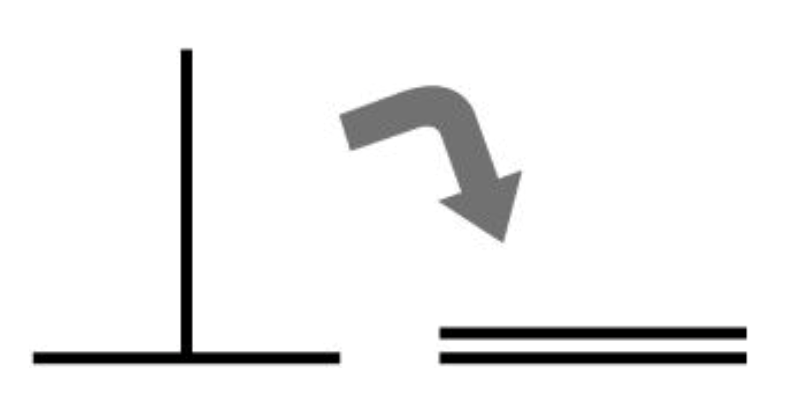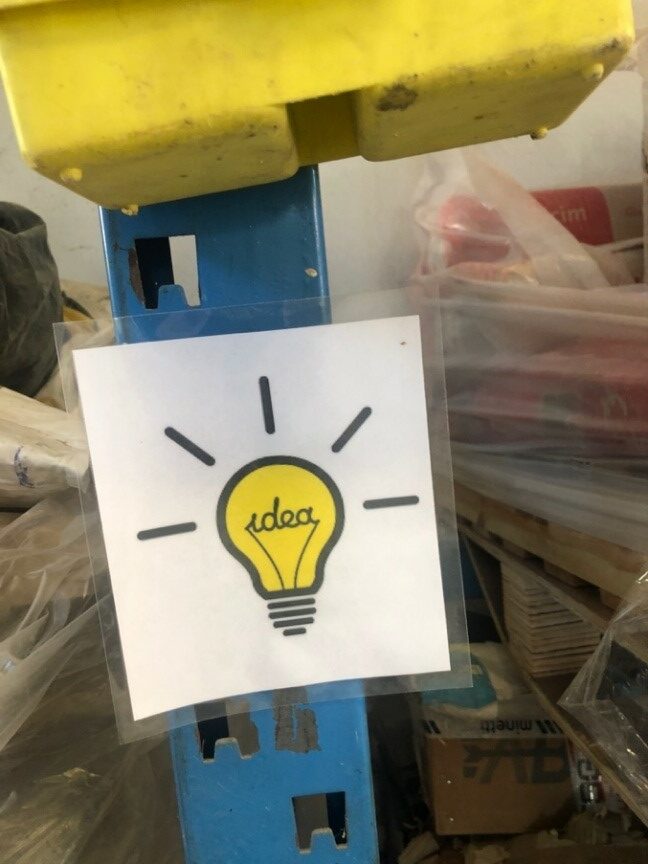Dear Gemba Coach,
I can’t find much written about visual management although it seems an important part of lean – any idea where to look?
All lean is essentially visual management, and yes, I agree there is very little written on it – I’m not sure why and it is a fascinating question. Rummaging through my bookcase I found a couple of 1990s books from Productivity Press: Poka-Yoke, edited by Hiroyuki Hirano, 1988; The Visual Factory by Michel Greif, 1991; and Visual Control Systems edited by Nikan Kogyo Shimbun, 1995.
I hadn’t looked at any of them in – ah, decades? Thank you for asking the question. They are fascinating, particularly the Poka-Yoke book, as poka-yoke seems to have completely dropped out of the lean conversation, but not that helpful, as there is no clear theory of visual management, and the examples, although intriguing, are rather haphazard.
I’m not sure I have such a clear theory of visual management myself, but I am certain it could be Toyota’s greatest contribution to management. Your question is bang on.
Taiichi Ohno starts his book on workplace management with an optical illusion:

At first, I thought this was just folklore, but I’ve realized over the years that his thinking about misconceptions is critical to any understanding of lean thinking. His core argument, oft-repeated and illustrated is that:
Misconceptions → wrong decisions → waste
And that misconceptions are very hard to change, both for engineers and workers. In Ohno’s mind, the only way to clear up a misconception is to try something else, hence learning by doing.
Conceiving Misconceptions
But where do misconceptions come from? Ohno hardly elaborates, but it’s interesting that his starting point is an optical illusion. He makes the point is that an optical illusion is easy to explain and people are easily persuaded. It turns out that yes, people are easily persuaded but optical illusions are not easy to explain.
Our naïve model of how the brain works is a computer-based metaphor:
Information (from receptor) → processing (cognitive circuits) → conclusion (action/belief)
But the more we learn about the brain the more it looks like it works the other way around:
Simulation of reality → error processing → conclusion
In other words, your brain is dreaming your life. In dreams, it operates without sensory input, so it goes off into weird stuff. During the day, it dreams just the same, but corrects constantly with what it picks up, so it all feels far more “real” – but that’s a reflection that the illusion is more solidly anchored in reality.
In practical terms, this means that when we see a simple illusion: https://en.wikipedia.org/wiki/Optical_illusion, or a very elaborate one, such as this one: https://www.youtube.com/watch?v=sKa0eaKsdA0, our brains are working perfectly normally (I’m told schizophrenic patients see through the illusion).
What this means is that there is a lot of reasoning in the simple act of looking. Basically, your brain assumes things are how they are, and then picks up differences with the assumptions – but only where it looks, and so is easily fooled as many experiments about selective attention have shown (This one is really fun: https://www.youtube.com/watch?v=vJG698U2Mvo).
A visual system is made of specific control points, but visual management is about directing attention, not controlling behavior. This modern understanding of the importance and nature of visual management leads us to clear up hidebound misconceptions:
- Posting more information is not visual management. Having PowerPoint slides on the wall with complicated indicator graphs is posting information, which can be useful, but not visual management. To be management, visual management needs to be intuitive (concrete) and point towards one specific thing. Crowding a wall with stuff people “ought to know,” such as a bulletin board, is the opposite of visual management as you have to make an effort to find what is relevant to you, so you probably won’t see it unless you’re already looking for it. People don’t pay attention to what is important, they find important what they pay attention to.
- Visual control is not necessarily visual management. The traditional term for visual management is “visual control” and comes out of an era obsessed with controlling things and people. Control points are key to understanding visual management because they are the specific areas where things are controlled to make sure we’re doing the right thing – and ask questions when things are off. But control points, both outputs and processes can easily multiply to infinity. Controlling everything visually is not visual management. Controlling stuff randomly is not visual management either.
Visual management is about setting an architecture of control points that help people orient on what the game is. People do not need to be controlled. They need help with orientation. Think of any sport. When you go to a match you will see:
- A scoreboard – not much of a game if we can’t tell who’s winning
- An arena – lines on the ground and hoops to show where the game is played and what marks a goal
- In soccer, yellow and red cards – a referee is there to count fouls
- Lots of rules you don’t see but are kept somewhere in a rule book
- Tactical plans to improve the team’s plan which you’ll see in the locker rooms
- Standard exercises to get the players in shape according to the game
This structure of control points provides a path for people to play the game. It shows:
- The objective: Get that ball in the goal.
- The next step: Prioritize and execute your next step wherever you are in the field.
- Who to call in case of foul: Examine and solve problems.
- Spaces for improvement: Dedicate out-of-the-field spaces to scratching heads about tactics and training.
The control points themselves can vary widely. In lean the most spectacular example of a control point system is kanban with adjacent andon. But you can visualize anything you need to. For instance, here, on the gemba of TSG in Italy, the warehouse manager visualizes implemented suggestions to show people they have a real impact on their operations.


Visual management is more than just the sequence of the control points. It’s all about the management. The purpose of the system is:
- People are autonomous in knowing what to do: Just like a red light makes you autonomous to handle a street crossing without a cop standing by, a good control point system lets you see where you should go/not go without anyone having to tell you.
- Management is a chain of help: Management is on hand to jump in when obstacles appear to get work back on track and figure out why.
- It’s used to learn to play the game better: By practicing the game and solving one problem after the other, we learn to play the game better.
Two Sides of True Visual Management
In fact, there always is a visual management system in place – whether you see it explicitly or not – and the question is whether the system gets you better or worse at what you do.
In fact, there always is a visual management system in place – whether you see it explicitly or not – and the question is whether the system gets you better or worse at what you do.For instance, Toyota-style kanban with constant pressure on taking out kanban cards steers you towards the ideal of one-piece flow and gets you to fix all the unpredictable aspects of production while increasing quality, flexibility, and productivity. As we see time and time again, this makes you incredibly better at manufacturing.
On the other hand, the agile-style kanban software developers have come up with visualizes work as “tickets” on the board and is essentially a backlog management systems for managers to feel on top of things – it doesn’t help with either quality, delivery, or flexibility, other than visualizing a very global mass of things to do (one ticket can represent an easy or difficult task, short or long, etc. so it doesn’t really visualize anything useful, and the sequence of tickets can change, so it doesn’t visualize a queue either).
To grasp visual management we have to understand both the visual aspect – clear, intuitive control points – and the management side – orienting and supporting people, not controlling their actions. In doing so, we can create paths to success where, as you step on the road, you can see the direction (towards the temple of excellence at the top of the mountain, or towards the mud of mediocrity in the valley), see what next step to take and how fast you’re progressing, face obstacles and think flexibly to overcome them with the help of your colleagues, and from these small victories, discover more about the path and learn to understand the way more deeply so that you become a more accomplished traveler.
A bad visual management system is static – it will list the endless criteria you need to somehow get right in order to achieve “best practice,” but leaves you no way to prioritize or know where to start – or indeed solve issues when you encounter them.
A good visual management system is one that reveals purpose, salience to prioritize and execute, and warnings to head-up obstacles and learn to overcome them. In that, the visual management system can also be kaizened endlessly until it becomes part of the normal way of doing things.







This is exactly what I have been looking for. Thank you.